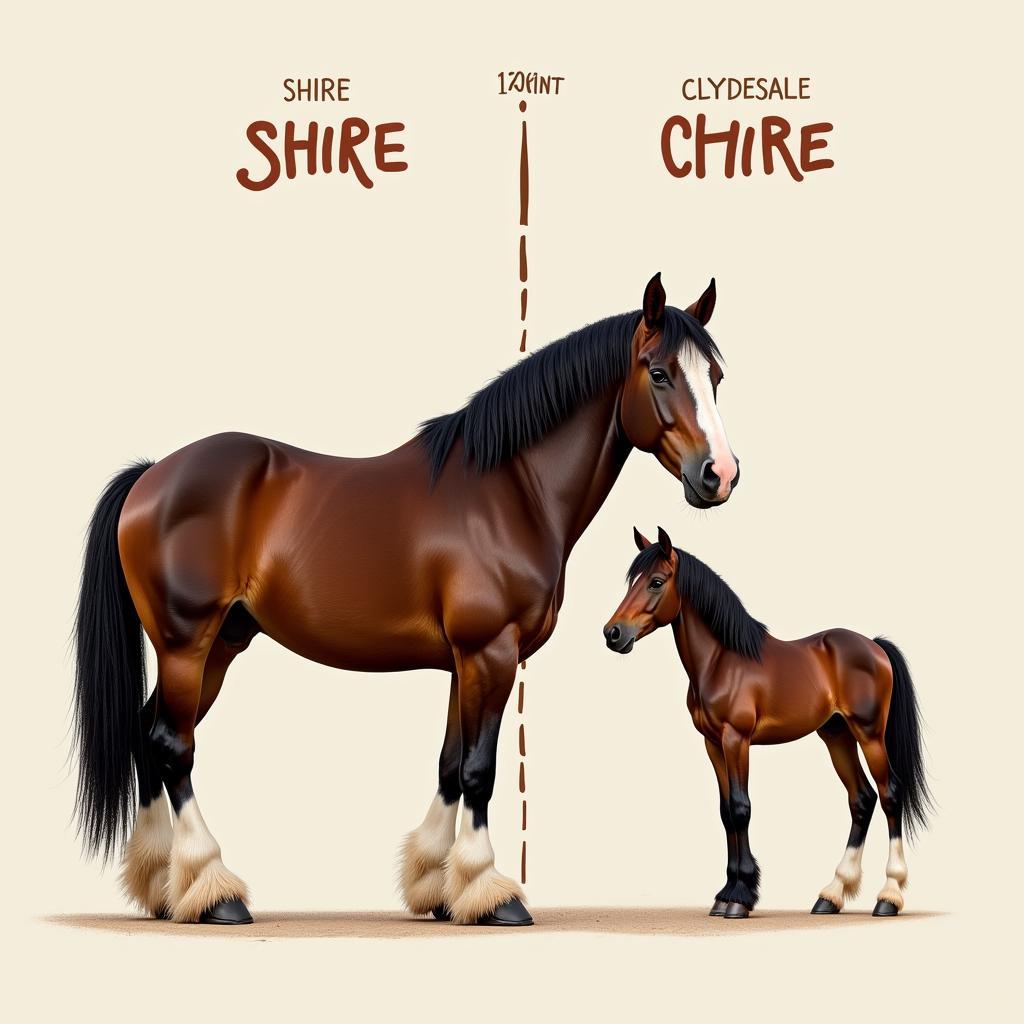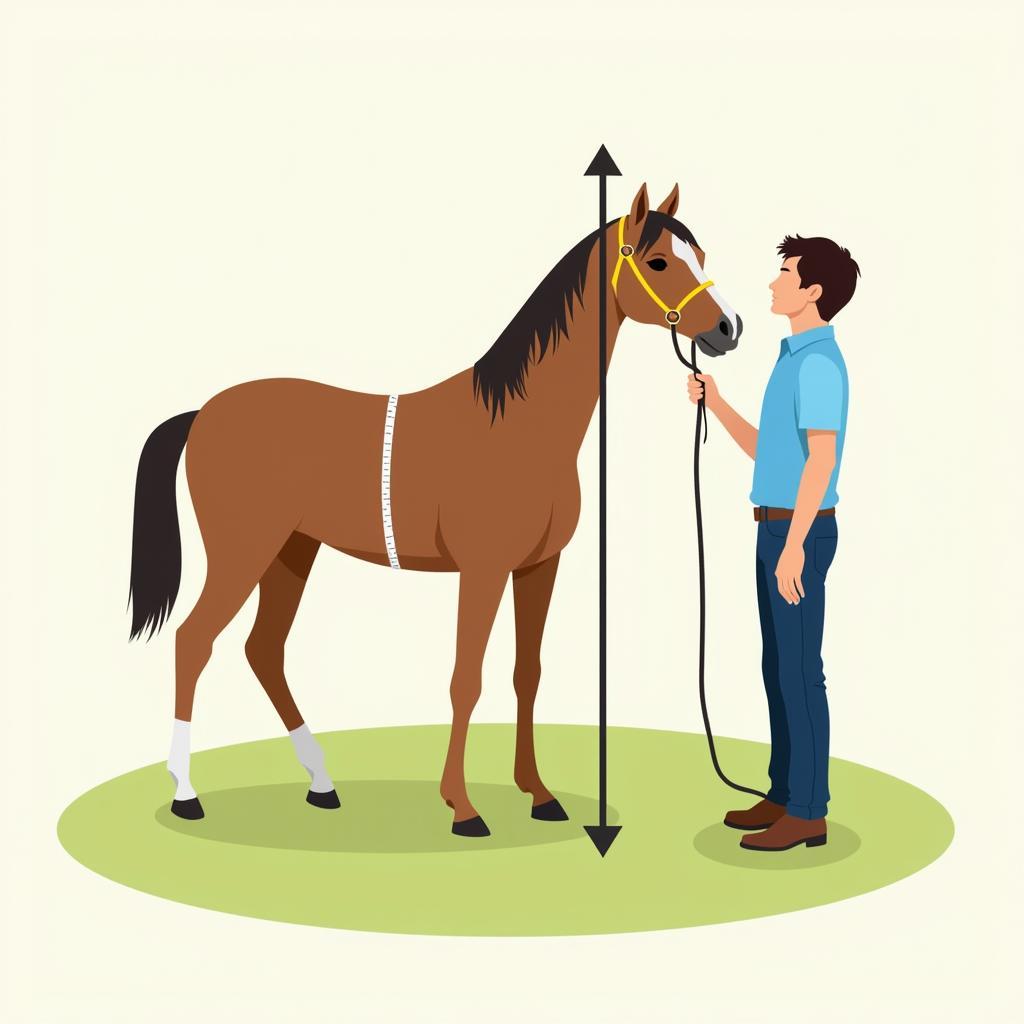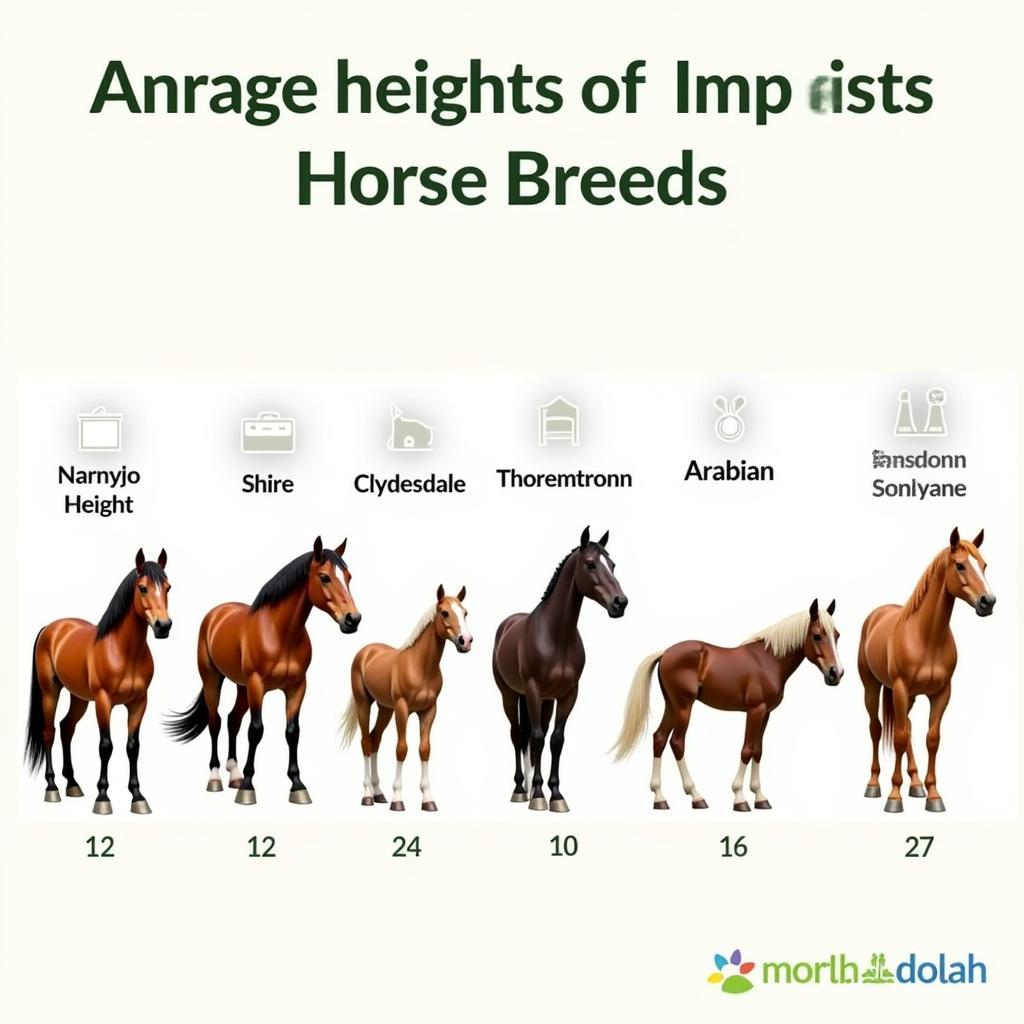Curious about the maximum height a horse can reach? You’re not alone! Horse lovers often wonder about the incredible range in size within the equine world. From miniature horses that can fit on your lap to towering draft breeds, horses come in a fascinating array of heights. Let’s explore the factors that influence horse height and delve into the world of the tallest horses on record.
Factors Affecting a Horse’s Height
Just like in humans, a horse’s height is determined by a combination of genetics and environmental factors.
- Breed: This is the most significant factor. Certain breeds are predisposed to be taller than others. For instance, Shire horses and Clydesdales are known for their impressive stature, while Shetland ponies are recognized for their diminutive size.
- Genetics: Within each breed, individual genes inherited from the parents play a crucial role. A foal’s lineage can often predict its mature height.
- Nutrition: Proper nutrition, especially during a horse’s crucial growing years, directly impacts its growth and development. A balanced diet rich in essential vitamins and minerals is key for achieving optimal height.
- Health: Underlying health conditions can affect a horse’s growth potential. Chronic illnesses or nutritional deficiencies during development may stunt growth.
 Tallest Horse Breeds
Tallest Horse Breeds
Measuring Horse Height: Hands Up!
Horse height is traditionally measured in “hands.” A hand is equivalent to 4 inches. This unique unit of measurement has been used for centuries and originates from the width of a human hand. To measure a horse’s height, a special measuring stick is used, and the measurement is taken from the ground to the highest point of the withers—the ridge between the shoulder blades.
Giants Among Horses: Draft Breeds
Draft horses are renowned for their impressive size and strength. Bred for heavy work like plowing fields and pulling carts, these gentle giants possess calm temperaments and powerful builds.
- Shire Horses: Originating from England, Shires are known for their feathered legs and often hold records for the tallest horses.
- Clydesdale Horses: Hailing from Scotland, Clydesdales are instantly recognizable by their striking bay coat, white markings, and feathered feet.
- Percheron Horses: This French breed is known for its intelligence and versatility. While not as tall as Shires or Clydesdales, Percherons are still considered a large draft breed.
 Measuring Horse Height
Measuring Horse Height
Record-Breaking Heights: How Tall Can Horses Get?
The title of “tallest horse” has been held by several remarkable equines throughout history.
- Sampson (later renamed Mammoth): This Shire gelding, foaled in 1846 in England, reached an astounding height of 21.2 1/2 hands (7 feet 2 1/2 inches) at his peak.
- Noddy: Another Shire horse, Noddy stood tall at 20.2 hands (6 feet 10 inches).
While these heights are exceptional, it’s important to remember that they represent the upper limits of horse height.
Beyond Height: Appreciating Horse Diversity
While it’s fascinating to learn about the tallest horses, it’s important to appreciate the diversity of sizes within the equine world. From miniature horses to towering draft breeds, each horse possesses its own unique charm and characteristics.
FAQs about Horse Height
Q: At what age does a horse reach its full height?
A: Most horses reach their full height by the age of 5 or 6, although some breeds may continue to grow slightly until they are 7 or 8 years old.
Q: Is a taller horse always stronger?
A: Not necessarily. While height often correlates with strength, other factors like muscle mass, conformation, and overall health also play a significant role.
Q: Can you predict a foal’s height based on its parents’ heights?
A: While not always perfectly accurate, you can get a general idea by averaging the heights of the dam (mother) and sire (father).
 Horse Height Comparison
Horse Height Comparison
Q: Are there health concerns associated with extremely tall horses?
A: Just like with giant dog breeds, extremely tall horses can be prone to certain health issues like joint problems and heart conditions.
Q: Are there any disadvantages to having a very tall horse?
A: Practical considerations for owning very tall horses include finding appropriate tack and stabling, as well as potentially needing specialized equipment for transportation.
Exploring the World of Horses
The question of “How Tall Can Horses Get?” leads to a fascinating exploration of equine diversity, genetics, and history. From the mighty Shire horses to the smallest miniature horses, each horse holds a unique place in the world.
We encourage you to delve further into the world of horses! Explore our other articles to discover more fascinating facts and helpful tips about these incredible animals.
Need expert advice on horse care? Contact us at Phone Number: 0772127271, Email: [email protected] Or visit our address: QGM2+WX2, Vị Trung, Vị Thuỷ, Hậu Giang, Việt Nam. We have a 24/7 customer support team.